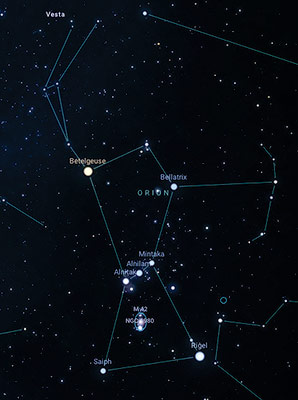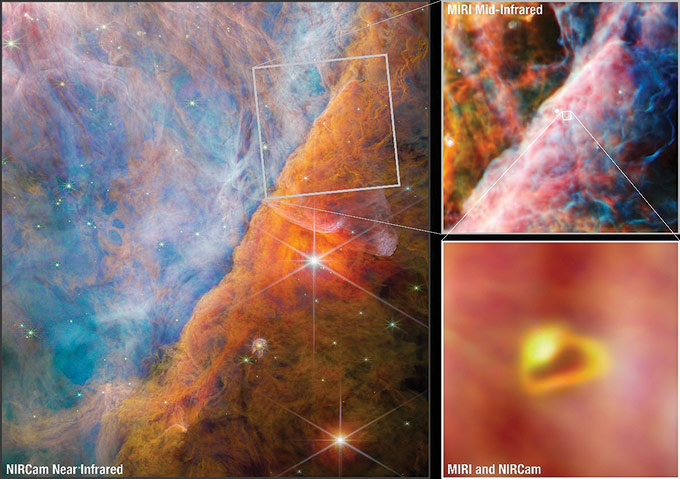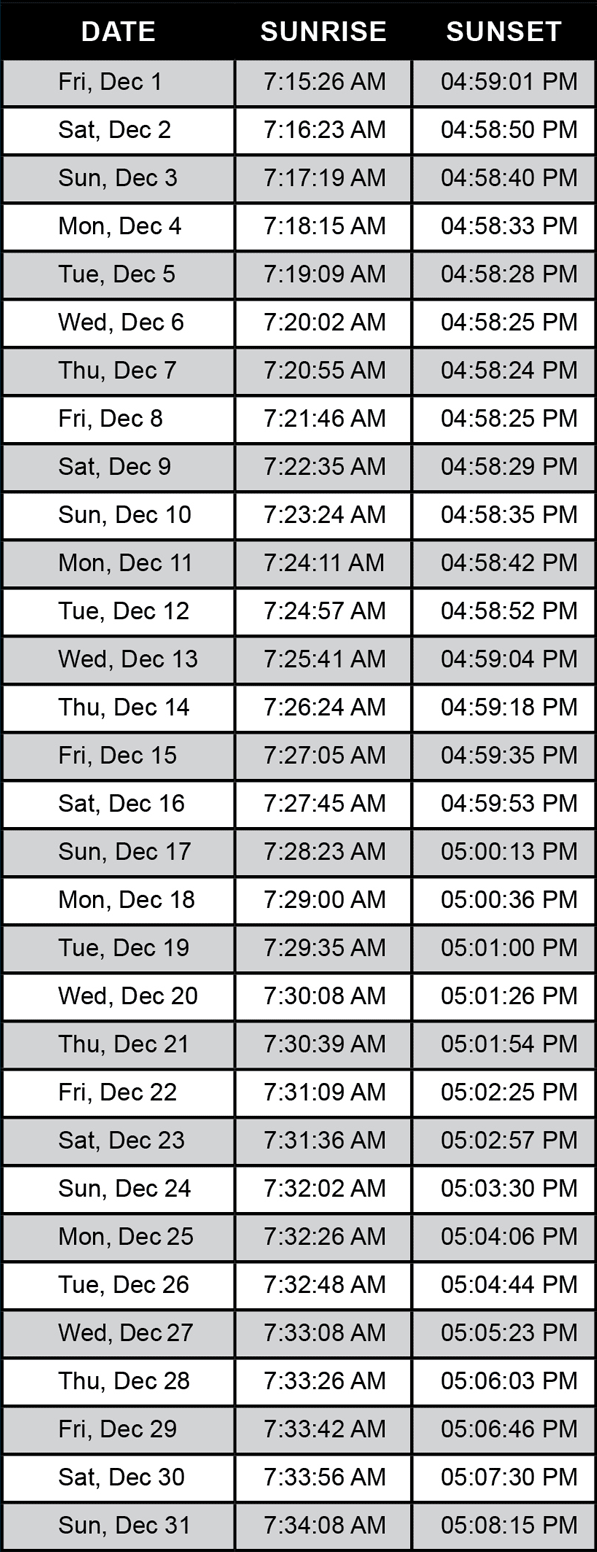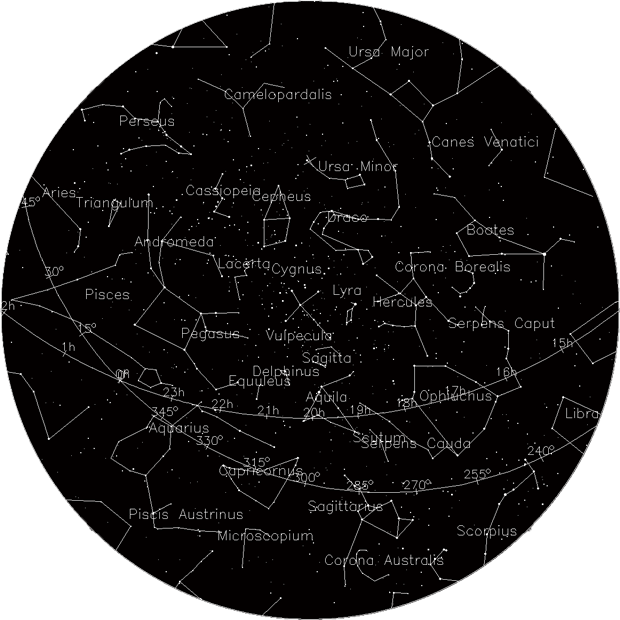DARK SKY HAPPENINGS - December 2023
Moab
UT (at City Hall)
38O34’ N Latitude
109O33’ W Longitude
4048 ft - 1234 m |
A Flame in the Sky – the Orion Nebulaa
Adapted from an article by Kat Trocher
It’s that time of year again— winter! Here in the Northern Hemisphere, the cold, crisp sky offers spectacular views of constellations, among the most famous is Orion the Hunter

With your naked eye, you can easily spot this hourglass-shaped constellation. Known as an epic hunter in Greco-Roman mythology, Orion and its parts have many names and meanings across cultures. In Egyptian mythology, this constellation represented the god Sah. The Babylonians referred to it as The Heavenly Shepard. The stars, often known as Orion’s Belt, are important to many stories: Shen in Chinese folklore, Tayamnicankhu in Lakota storytelling, and The Cosmic Hearth for the Maya of Mesoamerica.
The star-forming region and crown jewel of Orion— Messier 42 (M42), the Orion Nebula— sits 1,500 light years away from Earth. Part of the “sword” of Orion, this cloud of dust and gas sits below the first star in Orion’s Belt, Alnitak.M42 has been a place of interest for the Hubble, Spitzer, Chandra, and James Webb (JWST) space telescopes. Earlier this year, NASA and the European Space Agency released a new photo of the Orion Nebula taken from JWST’s NIRCam (Near-Infrared Camera), allowing scientists to image this early star forming region in both short and long wavelengths.
But, stars aren’t the only items in the nebula. In June 2023, JWST’s NIRCam and MIRI (mid-infrared instrument) imaged a developing star system with a planetary disk forming— a solar system happening in real time. Scientists named this planet-forming disk d203-506. By capturing these objects in multiple wavelengths of light, we now have even greater insight into objects in these hazy hydrogen regions of our night sky.
Learn more about what to spy in the winter sky with our upcoming article on the Night Sky Network page through NASA’s website!

Sunrise-Sunset
(The time of sunrise and sunset assumes a flat horizon. Actual time may
vary depending upon the landscape.) |
 |
MOON HAPPENINGS
December 4 - Third Quarter at 10:49 pm December 12 - New Moon at 4:32 pm December 19 - First Quarter at 11:39 am
December 26 - Full Moon at 5:33 pm
|
Moab Dark Skies mission is to promote the appreciation and conservation of Moab’s valuable and rare dark skies. Moab Dark Skies was established by the Friends of Arches and Canyonlands Parks in conjunction with the National Park Service and Utah State Parks Division of Natural Resources
For more information, check out our
Facebook page |
|
|




